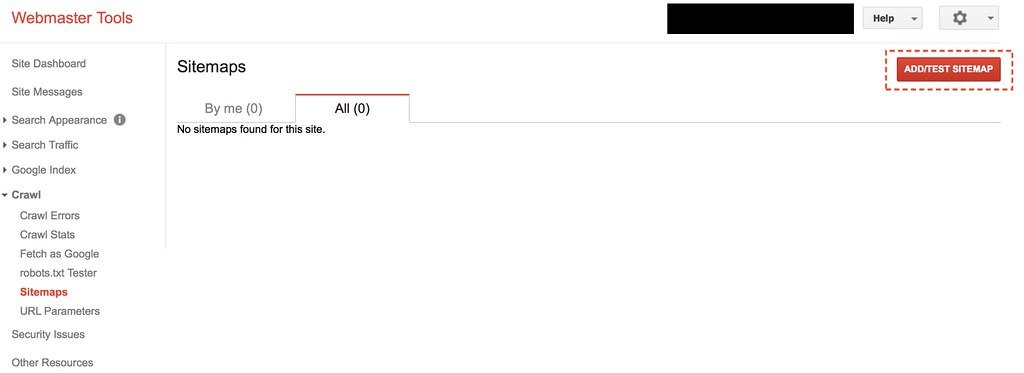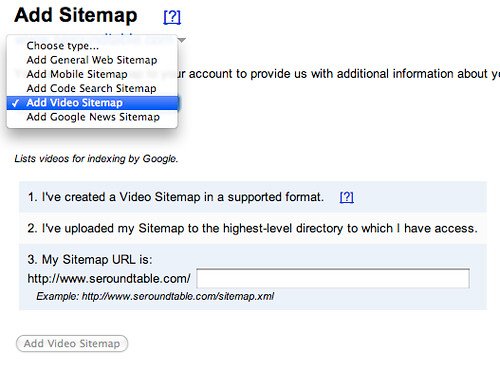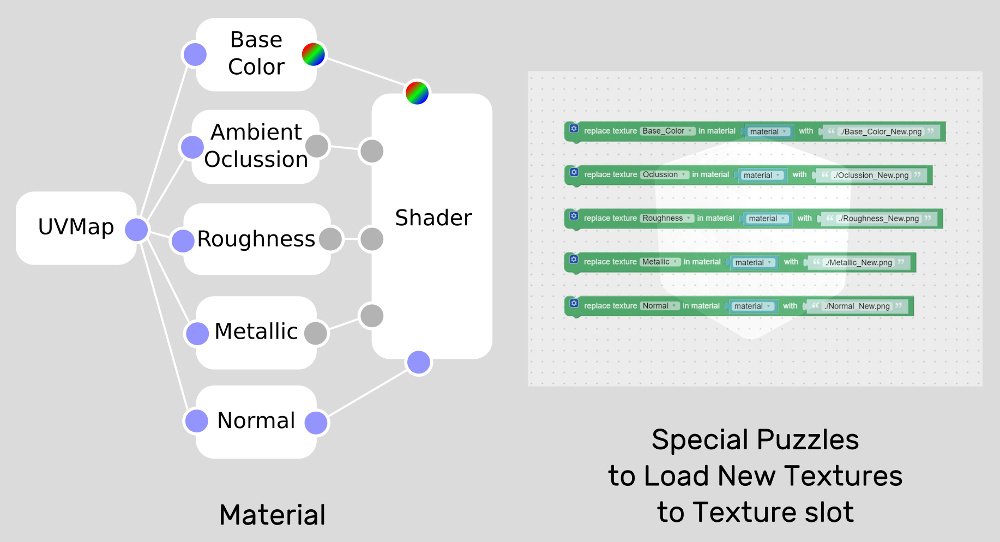Have you ever found yourself lost in the vast sea of the internet, desperately trying to find your way back? With countless websites competing for our attention, it’s no wonder that navigating through the digital landscape can feel like a daunting task. But fear not, fellow internet explorer, for today we embark on a quest to unlock the secrets of website navigation. In this article, we will delve into the realm of sitemaps – a vital tool that holds the key to a seamless online experience. Join us as we unravel the mysteries, uncover the hidden treasures, and master the art of navigating websites with ease. Get ready to embark on a journey like no other, where we will transform from lost wanderers to confident navigators, all in the pursuit of a seamless online adventure. So prepare to set sail, dear reader, as we unlock the power of sitemaps and chart a course towards digital enlightenment.
Table of Contents
- 1. Understanding the Importance of Sitemaps: Enhancing User Engagement and SEO Optimization
- 2. Designing User-Friendly Sitemaps: Key Elements and Best Practices for Seamless Navigation
- 3. Leveraging Sitemaps to Improve Website Accessibility: Inclusive Design Tips and Techniques
- 4. Optimizing Sitemaps for Enhanced Crawlability: Effective Strategies to Boost Search Engine Visibility
- Q&A
- In Retrospect

1. Understanding the Importance of Sitemaps: Enhancing User Engagement and SEO Optimization
In today’s digital landscape, a well-structured website is like a smooth-sailing ship, effortlessly guiding users to their desired destinations. At the heart of this navigation prowess lies the humble sitemap, a veritable roadmap that ensures a seamless online experience. But what exactly is a sitemap, and why is it crucial for both user engagement and search engine optimization (SEO)?
A sitemap is essentially a file that outlines the structure of your website, listing all the pages and content it contains. Think of it as a table of contents for your virtual library. By creating a sitemap, you enable search engines to crawl and index your site more efficiently, ensuring its visibility and ranking in search results. Moreover, sitemaps act as a tour guide for users, offering a clear and organized overview of your website’s content hierarchy. With just a glance, visitors can quickly find what they’re looking for, reducing frustration and increasing their engagement with your site. This ease of navigation not only enhances user experience but also encourages them to stay longer and explore more, ultimately boosting your website’s credibility and conversions. So, if you want to unlock the full potential of your website, mastering sitemaps is an absolute must for beginners venturing into the world of online presence. But how do sitemaps achieve this seamless experience, and what are the benefits they offer? Let’s dive deeper into this digital treasure map!
Benefits of a well-optimized sitemap:
– Improved search engine visibility: By providing search engines with a clear map of your website’s structure, sitemaps ensure that no valuable pages are left unnoticed or unindexed. This means that your content has a higher chance of appearing in relevant search results, attracting organic traffic and potential customers.
– User-friendly navigation: Sitemaps act as a handy tool for users, facilitating quick and easy access to the information they seek. With a well-organized sitemap, visitors can jump straight to the desired page, rather than wasting time aimlessly clicking through menus and links.
– Discovering hidden gems: Sometimes, your website might have hidden or less frequently visited pages that still hold valuable content. With a comprehensive sitemap, these hidden gems get the attention they deserve, enabling users to stumble upon them and discover relevant information they may have missed otherwise.
– Continuous optimization: As your website evolves, new pages and content will be added. By regularly updating your sitemap, you ensure that search engines and users are always aware of the latest additions and changes, effectively guiding them towards the most up-to-date information.
2. Designing User-Friendly Sitemaps: Key Elements and Best Practices for Seamless Navigation
Organizing Your Website’s Structure
Navigating through a website can be a breeze if it is well-structured. When designing a sitemap, beginners often overlook this crucial aspect. Start by categorizing your content into logical groups or sections – just like organizing files in a folder. This not only helps visitors find what they’re looking for effortlessly, but it also aids search engines in understanding your site. Keep in mind that consistency is key. Ensure that each page is labeled appropriately and resides in its relevant section. By doing so, you create a harmonious flow within your site that resonates with your users.
Visual Clarity for Intuitive Navigation
Think of your sitemap as a visual representation of your website’s hierarchical structure. Utilize bold headlines, subheadings, and bullet points to clearly communicate this structure to your visitors. Bold headings act as signposts, guiding users to their destination quickly. Subheadings divide content into manageable chunks, making it easier for users to skim through. Bullet points, on the other hand, allow visitors to absorb key information at a glance. By combining these elements, you can create a visually appealing and user-friendly sitemap that simplifies navigation. Remember, a well-designed sitemap is like a roadmap that eliminates confusion and ensures a seamless online experience for your users.
3. Leveraging Sitemaps to Improve Website Accessibility: Inclusive Design Tips and Techniques
A well-designed website is not just visually appealing but also easy to navigate for all users, including those with disabilities. One effective way to enhance website accessibility is by leveraging sitemaps. Sitemaps act as a roadmap for your website, allowing users to easily find and navigate through its different pages. In this post, we will explore some inclusive design tips and techniques to help you master the power of sitemaps and provide a seamless online experience for all.
1. Clear and concise organization: By structuring your sitemap in a logical and hierarchical manner, you ensure that users can easily understand the structure of your website. Use headings and subheadings to break down content into sections, making it easy to scan and navigate through.
2. Meaningful labels and descriptions: When creating your sitemap, make sure to use descriptive labels for each page or section. Use bold text or header tags to make these labels stand out. This way, users can quickly understand the purpose of each page and easily find the information they are looking for.
3. Visual cues and indicators: Integrating visual cues into your sitemap can greatly enhance the overall user experience. Consider using icons or symbols to denote specific types of content, such as videos, articles, or contact forms. These visual indicators make it effortless for users to identify and access the content they need.
4. Inclusive navigation options: Remember that not all users navigate websites in the same way. In addition to traditional menus and links, consider offering alternative navigation options such as search bars or breadcrumb trails. This empowers users to choose the method that works best for them, ensuring they can find what they’re looking for with ease.
By incorporating these inclusive design tips and techniques, you can leverage sitemaps to greatly improve website accessibility. With clear organization, descriptive labels, visual cues, and inclusive navigation options, you’ll unlock seamless online experiences for all users, regardless of their abilities.
4. Optimizing Sitemaps for Enhanced Crawlability: Effective Strategies to Boost Search Engine Visibility
Sitemaps play a crucial role in enhancing the crawlability of your website, ultimately boosting its visibility on search engines. By providing search engine bots with a comprehensive roadmap of your website’s structure, you can ensure that all your valuable content gets indexed and ranked appropriately. Here are some effective strategies to optimize your sitemaps for enhanced crawlability:
1. Segmented Sitemaps: Instead of having one large sitemap, consider segmenting it into smaller, more manageable chunks. This allows search engine bots to crawl specific sections of your site more efficiently, leading to faster indexing and improved visibility. Additionally, it makes it easier for you to analyze the performance and identify any issues in specific areas of your website.
2. XML Sitemaps: XML sitemaps are the most commonly used format and are specifically designed for search engines. They provide detailed information about each page on your website, including the URL, last modified date, priority, and more. Using XML sitemaps ensures that search engines can easily find and understand the content on your site, leading to better crawling and indexing. Remember to update and submit your XML sitemap whenever you make changes to your website structure or content.
3. HTML Sitemaps: While XML sitemaps are primarily for search engines, HTML sitemaps are for your website visitors. An HTML sitemap is a user-friendly navigation tool that displays all the important pages of your website in a structured format. It helps visitors easily find what they’re looking for and provides an additional internal linking opportunity. Including an HTML sitemap not only improves the overall user experience but also indirectly assists search engine crawlers in discovering your content.
4. Image and Video Sitemaps: If your website contains a significant amount of visual content, consider creating separate sitemaps for images and videos. Including these specialized sitemaps allows search engines to understand and rank your multimedia files more effectively. By optimizing the metadata and providing additional context (such as captions and titles), you can improve the visibility of your images and videos in search engine results.
By implementing these sitemap optimization strategies, you can unlock the true potential of your website’s navigation. Enhancing crawlability not only helps search engines understand your content better but also provides a seamless online experience for your visitors. So, give your website the visibility it deserves by mastering the art of sitemaps!
Q&A
Q: What exactly are sitemaps and why are they important for website navigation?
A: Sitemaps are essentially blueprints of a website’s structure that outline all the different pages and content available to users. They provide a clear and hierarchical representation of a website’s architecture, allowing users to easily navigate and access the information they are seeking. Thus, sitemaps play a vital role in enhancing the overall user experience and ensuring seamless navigation.
Q: How do sitemaps contribute to a seamless online experience?
A: Sitemaps act as a compass, guiding users through the vast landscape of a website. By presenting a visual overview of the website’s structure, sitemaps empower users to quickly find and access the relevant pages they are looking for. This eliminates frustration and enhances user satisfaction, ultimately leading to a seamless online experience.
Q: Can you explain the different types of sitemaps?
A: There are primarily two types of sitemaps: XML sitemaps and HTML sitemaps. XML sitemaps are designed for search engines, providing information about the website’s URLs, their relevance, and how often they are updated. On the other hand, HTML sitemaps are intended for human users, offering a user-friendly navigation aid that helps visitors browse a website efficiently.
Q: What are the benefits of XML sitemaps for search engine optimization (SEO)?
A: XML sitemaps are powerful tools for SEO as they provide search engines with important information about a website’s structure and content. By submitting an XML sitemap to search engines, website owners can ensure that all relevant pages are indexed and easily discoverable. This can lead to improved search engine rankings, greater organic traffic, and enhanced visibility for the website.
Q: How can a well-designed sitemap impact website navigation?
A: A well-designed sitemap acts as the backbone of a website, organizing its content in a logical manner and creating a clear path for users to follow. It helps users orient themselves, understand the website’s structure, and explore various sections effortlessly. With a seamless navigation experience, users are more likely to stay engaged and satisfied with the website, increasing the chances of conversion and repeat visits.
Q: Are there any best practices for creating a sitemap?
A: Absolutely! When creating a sitemap, it is essential to prioritize user experience and usability. Some best practices include: organizing content into relevant categories and subcategories, using descriptive and intuitive labels for pages, incorporating user-friendly navigation elements such as drop-down menus or breadcrumbs, and regularly updating the sitemap to reflect any changes or additions to the website’s structure.
Q: Can sitemaps benefit mobile website navigation as well?
A: Certainly! With the increasing use of mobile devices, optimizing website navigation for mobile users has become imperative. Sitemaps can significantly improve the mobile user experience by simplifying navigation and ensuring that important pages are easily accessible through smaller screens. By creating mobile-specific sitemaps or designing responsive sitemaps, website owners can enhance the overall mobile browsing experience.
Q: Are there any common pitfalls to watch out for when working with sitemaps?
A: While sitemaps are powerful tools for website navigation, there are some common pitfalls to watch out for. These include neglecting to update the sitemap, creating overly complex or confusing sitemap structures, or failing to ensure consistency between the sitemap and the actual website structure. It is crucial to regularly review and optimize your sitemap to guarantee its accuracy and effectiveness.
Q: How can website owners ensure the success of their sitemaps?
A: To ensure the success of your sitemap, it’s essential to collaborate with your web development team or utilize sitemap generation tools. Regularly monitoring and analyzing user behavior on your website can also help identify any navigation issues and allow for continuous improvement. By prioritizing user experience, staying updated with the latest web development practices, and regularly maintaining your sitemap, website owners can unlock the full potential of seamless website navigation.
In Retrospect
As we conclude our expedition into the enchanting realm of website navigation and the invaluable tool known as sitemaps, we hope that this comprehensive guide has provided you with the key to unlocking a seamless online experience.
Just as a skilled cartographer skillfully maps out uncharted territories, a sitemap empowers website owners and designers to pave a clear path for users, allowing them to navigate effortlessly through the virtual landscape. Gone are the days of aimlessly wandering through a labyrinth of web pages, searching for the elusive information you seek. With masterfully crafted sitemaps, the online journey becomes an enchanting stroll through a well-organized treasure trove of content.
By understanding the critical role sitemaps play in website navigation, we have unraveled the secrets behind creating an intuitive and user-friendly digital footprint. From the planning stage to the implementation, each step has been carefully explored to ensure a seamless synthesis of form and function.
But let us remember, dear reader, that the magic of website navigation lies not only in the technicalities but also in the unwavering dedication to providing an exceptional online experience. The synergy between aesthetics, design, and usability creates an atmosphere where users can easily get lost in the boundless possibilities your website offers.
So, as you venture forth armed with your newfound knowledge, we urge you to unleash your creativity and embark upon a remarkable journey of website navigation. Seek out the hidden corners, craft pathways that entice and inspire, and watch as users joyfully traverse the digital expanse you have meticulously crafted.
In the ever-changing landscape of the internet, the mastery of sitemaps is a vital weapon in your arsenal. By arming yourself with this knowledge, you have equipped yourself with the power to captivate and engage your audience, forging a connection that transcends the virtual realm.
As the sun sets on our exploration of sitemaps, we bid you farewell, and may your future endeavors in website navigation be filled with seamless grace and boundless success. Unlock the full potential of your website, and may your online journeys be nothing short of enchanting.

